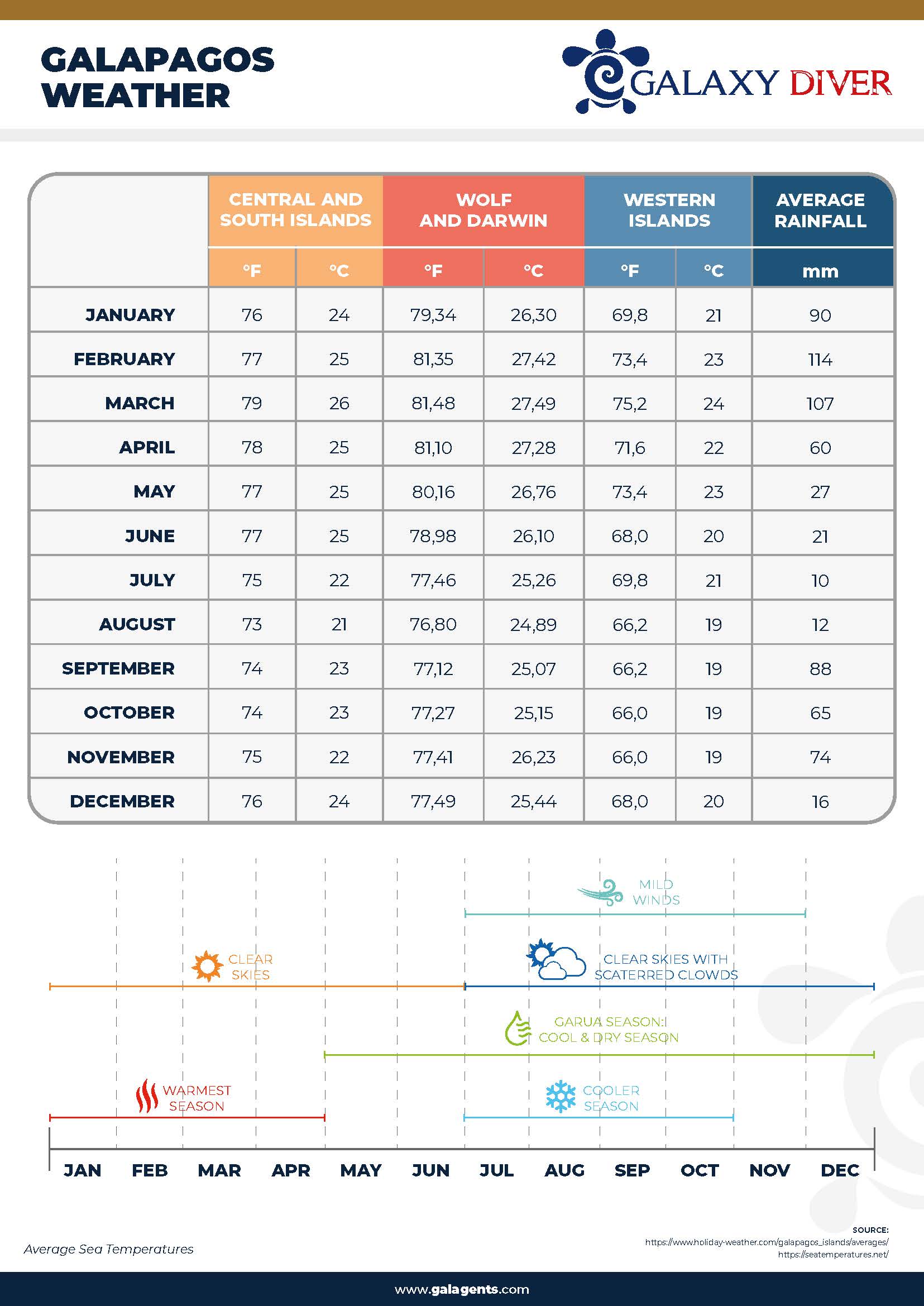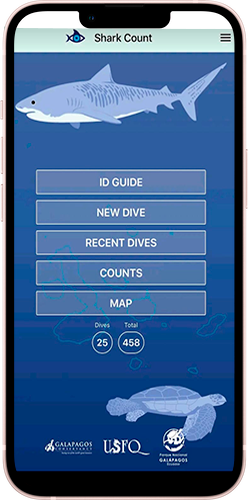What is the minimun age for divers in the Galaxy diver?
Minimum age of 15 for divers is strongly suggested.
Whats the dive insurance needed?
Do not confuse regular travel medical and/or travel insurance with diving-specific insurance
such as DAN (Divers Alert Network) or Dive Assure. This type of insurance will cover all of
your scuba diving and snorkeling activities, including the costs for recompression chamber
treatment and emergency air evacuation. These are not covered by the average travel insurance.
We usually recommend contacting DAN or Dive Assure who can set you up with a travel insurance
plan which includes general travel insurance, including trip cancellation …. plus full dive coverage.
Can beginners dive in the Galapagos?
Galapagos Islands is a truly unique experience. So yes, you should definitely take that PADI scuba diving
Galapagos beginner course before opting for a liveaboard.
How difficult is diving in Galapagos?
Currents are moderate to strong and may require you to grab hold of rocks below the surface so you don’t drift away.
What experience is needed for diving in the Galapagos?
Due to its currents Only experienced divers should be going on a liveaboard. (Minimum Advanced Open Water, 50 logged dives, and experience in cold water and currents.)
How many logged dives do you need at least to dive in the Galaxy Diver Galapagos?
Visitors will need to have a PADI Certification (minimum Open Water Diver license) or equivalent and a total of at least 50 logged dives.
What is the best time to go to the Galapagos?
In December and May, the water temperature becomes warmer, creating a favorable environment for impressive and colorful marine biodiversity. In these warm waters, divers can enjoy excellent visibility as the presence of sediments and algae is minimal.
From June to November, the water temperature decreases, providing an opportunity for cold-water diving. During this period, unique species such as hammerheads and whale sharks can be encountered. These months create a paradise for diving enthusiasts and marine life lovers.
What is the coldest month in Galapagos?
The cold season lasts for 3.7 months, from November 14 to March 6, with an average daily high temperature below 56°F/ 13 C . The coldest month of the year in Galápagos is January.
How is diving visibility in Galapagos?
Although there can be 30 meter (100 feet) visibility in the Galapagos Islands, the more common visibility
conditions are between 10 – 20 meters (30 – 70 feet).
Visibility is very dependent on the amount of plankton in the water. For this reason, the colder months of
the year have poorer visibility than the warmer months. In exchange, more plankton in the water means more activity.
What gear do diving liveaboards usually have?
Most diving cruises have the following gear available for rent: BCD, Reg-set, wetsuit, mask, snorkel, fins, computer, and gloves.
What is the best way to dive here?
We highly recommend a liveaboard experience because the most interesting dive sites are remote and
are around islands whose shores tourists aren’t permitted to visit on foot.
Do the liveaboards rent equipment, or should I take my own?
Yes they do rent equipment, refer to our rental pricing
Does Galapagos have a recompression chamber?
Yes it does. There is an SSS chamber in Puerto Ayora which is open 24/7 . So if you are in need of emergency
treatment it can be done in the islands without having to return to mainland Ecuador.
As a single traveler, must I pay a single supplement?
If you are a single traveler joining a liveaboard at the Galapagos Islands, you can normally expect to share a cabin with
another guest and pay the standard price. However, if you do not wish to share but want to ensure a private cabin for you alone,
you can pay a single supplement on top of the published price. With us is 50% single supplement.
What languages are spoken?
Spanish is Ecuador’s official language , English, however is spoken aboard Galaxy Diver by guides and part of the crew.
What currency is used in Galapagos?
The US dollar is the currency of Ecuador and the Galapagos Islands.
What is included in a Galapagos Diving trip?
We included accommodations aboard the vessel, diving, compressed air, tanks, weights, and weight belts,
3 meals, potable water, 2 Dive Master(ratio is 6:1).




